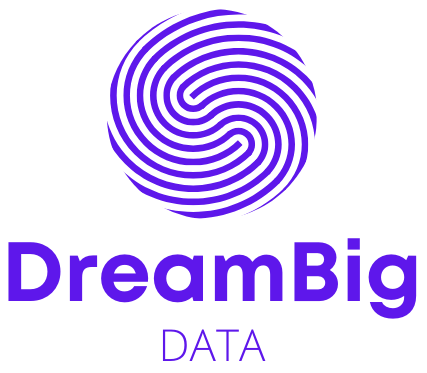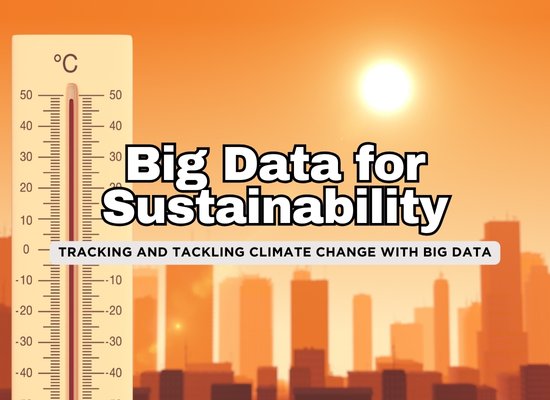The fight against climate change has entered a new era, where data is the new superpower. By gathering, analyzing, and acting on vast amounts of environmental data, scientists and governments can make more accurate predictions, identify trends, and implement solutions that have a real impact. Big data provides a unique opportunity to track environmental changes in real-time and take preventative actions to reduce carbon footprints.
Let’s explore how big data is being used to track and combat climate change, starting with the first three key applications.
1️⃣ Real-Time Climate Monitoring and Forecasting
One of the most significant uses of big data in climate change is real-time monitoring of environmental conditions. With sensors, satellites, and data collection points placed around the world, scientists can now track temperature changes, air quality, ocean temperatures, and carbon emissions as they happen. This real-time data allows for immediate action and better long-term planning.
Why It’s Essential
- Offers a clear picture of global temperature fluctuations and helps forecast extreme weather events like storms and heatwaves.
- Provides early warning systems that help communities prepare for and mitigate natural disasters.
- Enables decision-makers to adjust environmental policies in response to changing conditions.
How It’s Used
- Satellites capture atmospheric data, which is then analyzed to predict weather patterns and track greenhouse gas emissions.
- Ocean and ice temperature sensors provide valuable insights into sea-level rise and the melting of glaciers.
- Governments and organizations use this data to enforce stricter emissions controls and improve disaster management plans.
2️⃣ Energy Efficiency and Carbon Footprint Reduction
Big data is playing a crucial role in improving energy efficiency across industries and helping to reduce global carbon footprints. By analyzing consumption patterns, energy providers can optimize grids, identify inefficiencies, and better forecast future energy demands.
Why It’s Essential
- Helps reduce energy waste by optimizing systems and equipment.
- Enables businesses and homes to lower energy consumption, reducing their carbon emissions.
- Assists governments in making informed decisions on renewable energy investments.
How It’s Used
- Smart grids use big data to balance energy loads, integrating renewable sources like solar and wind into existing systems.
- Data collected from smart meters in homes and businesses provides insights into usage patterns, helping to optimize energy consumption.
- Businesses can track energy usage in real time, improving the energy efficiency of equipment and reducing waste.
3️⃣ Identifying and Protecting Vulnerable Ecosystems
Big data allows researchers to identify areas most at risk from climate change, including vulnerable ecosystems, endangered species, and critical habitats. By analyzing biodiversity data and environmental trends, scientists can monitor these ecosystems and take preventive measures to protect them.
Why It’s Essential
- Helps preserve biodiversity by identifying regions most affected by climate change.
- Enables targeted conservation efforts, saving ecosystems that are essential for global health.
- Supports policies aimed at protecting critical wildlife habitats and maintaining ecological balance.
How It’s Used
- Remote sensing technology and satellites collect data on forest cover, wetlands, and ocean health, helping conservationists monitor changes over time.
- Big data models analyze biodiversity trends and predict the impacts of climate change on ecosystems.
- Governments and NGOs use this data to create protected areas and develop conservation policies.
4️⃣ Sustainable Agriculture and Food Security
Big data is transforming agriculture by helping farmers optimize crop yields, reduce resource use, and ensure sustainable farming practices. With climate change threatening food security, data-driven solutions are crucial for creating resilient food systems and reducing the environmental footprint of agriculture.
Why It’s Essential
- Helps farmers make better decisions on irrigation, planting, and fertilization, conserving resources.
- Tracks weather patterns and soil conditions to optimize crop production in changing climates.
- Enables precision agriculture techniques that reduce chemical use and preserve soil health.
How It’s Used
- Satellite imagery and drones capture real-time data on crop health, irrigation needs, and pest outbreaks.
- Soil sensors and weather stations monitor local conditions, allowing farmers to adjust practices based on climate trends.
- Data analytics helps farmers forecast yields, identify risks, and manage crop rotation to maintain soil fertility and productivity.
5️⃣ Climate Change Mitigation and Carbon Capture Technology
Big data is essential for tracking and improving carbon capture technologies, a vital component of global efforts to mitigate climate change. By analyzing data from carbon capture systems, researchers can enhance the efficiency of these technologies, helping reduce the overall carbon footprint of industries like energy and manufacturing.
Why It’s Essential
- Enables more effective carbon capture and storage (CCS) systems to trap CO2 before it enters the atmosphere.
- Tracks carbon emissions across industries, helping governments and organizations meet their emission reduction goals.
- Optimizes existing carbon capture systems, making them more cost-effective and scalable.
How It’s Used
- Data from emission sensors in industrial plants is analyzed to track CO2 output and identify inefficiencies.
- Carbon capture projects collect data on CO2 levels, helping improve technologies and predict long-term storage potential.
- Big data models simulate the impact of carbon capture on global climate, guiding policy and investment decisions.
6️⃣ Enhancing Climate Change Policy and Global Cooperation
Big data provides the insights needed to shape effective climate policies and foster international cooperation. By aggregating data from diverse sources—such as climate models, emissions statistics, and environmental research—governments can make informed decisions about carbon reduction and environmental regulations, paving the way for stronger global agreements.
Why It’s Essential
- Helps governments make data-driven decisions about climate action plans, emissions regulations, and sustainability targets.
- Provides a comprehensive view of global emissions, enabling countries to track progress and adjust commitments.
- Fosters international collaboration by making data on global climate change more accessible and transparent.
How It’s Used
- Data from international climate agreements (like the Paris Agreement) is analyzed to measure progress toward emission reduction goals.
- National and local governments use big data to track emission levels, formulate policies, and implement carbon taxes or cap-and-trade systems.
- Climate models aggregate data from around the world to project future climate scenarios, guiding policy and mitigation strategies.
7️⃣ Climate Resilience and Disaster Recovery
Big data is playing a crucial role in helping communities prepare for and recover from climate-related disasters such as hurricanes, floods, and wildfires. By analyzing historical data, tracking weather patterns, and using real-time data during disasters, communities can develop more effective resilience strategies and speed up recovery efforts.
Why It’s Essential
- Improves disaster response times, allowing for better preparedness and quicker evacuations.
- Helps reduce the economic impact of natural disasters by enabling more efficient recovery planning.
- Enhances community resilience by providing insights into vulnerability and risk management.
How It’s Used
- Predictive analytics is used to forecast the likelihood of extreme weather events and identify vulnerable regions.
- Geospatial data and satellite images help map disaster areas, guiding emergency response teams.
- Real-time data from weather stations and drones supports ongoing disaster relief and recovery efforts.
8️⃣ Transportation and Emissions Reduction
Big data is revolutionizing transportation systems by optimizing routes, reducing fuel consumption, and integrating alternative energy solutions, all of which contribute to lowering greenhouse gas emissions. Smart transportation networks rely on data to reduce congestion, improve efficiency, and minimize the environmental footprint of travel.
Why It’s Essential
- Helps reduce emissions from transportation, one of the largest contributors to climate change.
- Improves traffic flow, reducing fuel waste and air pollution.
- Supports the integration of electric vehicles and public transit solutions, further minimizing carbon footprints.
How It’s Used
- Route optimization algorithms calculate the most efficient paths for freight, delivery services, and public transportation, minimizing fuel consumption.
- Data from smart traffic systems helps reduce congestion and improves the efficiency of city-wide transportation networks.
- Big data is used to analyze and support the deployment of electric vehicles, integrating them into broader urban mobility plans.
9️⃣ Circular Economy and Waste Reduction
Big data is central to driving the circular economy, where products are reused, recycled, and remanufactured instead of being discarded. By tracking products from production to end-of-life, big data helps identify opportunities to reduce waste, improve recycling efforts, and close the loop on resource use.
Why It’s Essential
- Reduces waste by optimizing product life cycles and minimizing disposal.
- Supports the reuse and recycling of materials, preventing over-extraction of resources.
- Helps businesses achieve sustainability targets by cutting down on their carbon footprint.
How It’s Used
- Supply chain data is analyzed to track products and materials from their creation through to recycling or reuse.
- Waste management data helps identify areas for improvement in recycling rates and waste reduction.
- Product lifecycle analysis enables manufacturers to design products for longer use and easier recycling.
🔟 Optimizing Renewable Energy Systems
Big data is instrumental in the transition to renewable energy, helping to optimize the use of solar, wind, and other green technologies. By analyzing data from energy production sites, weather patterns, and energy consumption, big data ensures that renewable energy systems are efficient, reliable, and integrated into the existing power grid.
Why It’s Essential
- Improves the efficiency and reliability of renewable energy sources.
- Helps integrate renewable energy into existing power grids, reducing reliance on fossil fuels.
- Provides insights into energy storage solutions and how to better manage energy demand.
How It’s Used
- Data from weather forecasting systems is used to predict energy production from solar and wind farms.
- Grid data helps optimize the flow of energy, ensuring renewable sources are prioritized when available.
- Energy storage data is analyzed to improve battery systems and reduce energy waste.
Big data is transforming the fight against climate change. From real-time climate monitoring to optimizing renewable energy systems, the data-driven approach is empowering governments, businesses, and individuals to take meaningful action. By harnessing the power of big data, we have the opportunity to not only track and understand climate change but actively combat it in real time.
The tools and technologies powered by big data allow us to be proactive in addressing the climate crisis, making smart, evidence-based decisions that can help secure a sustainable future for generations to come.



